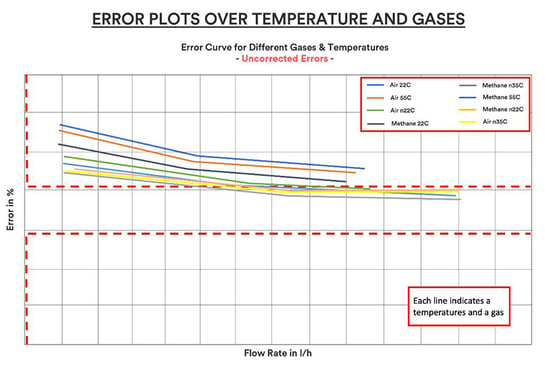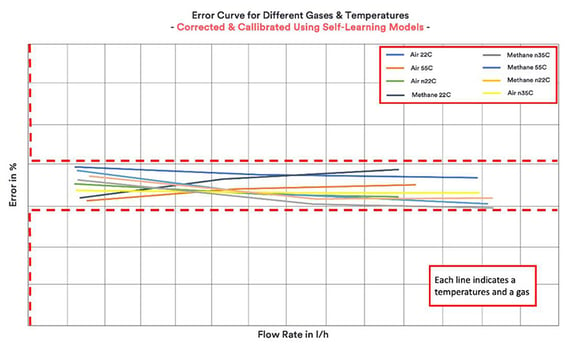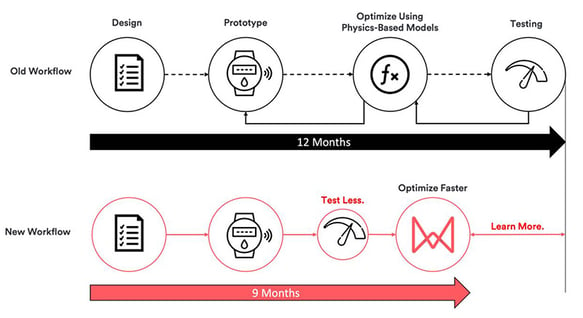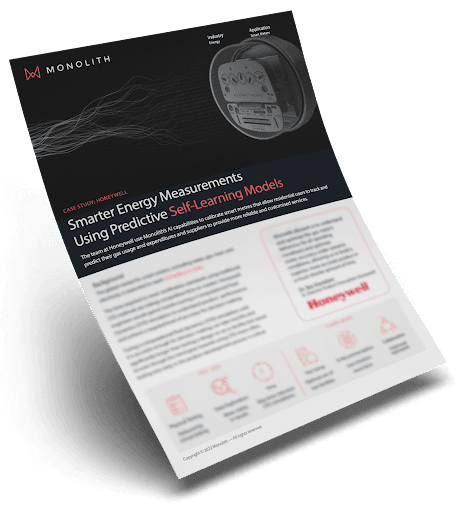Improve Smart Meter System Performance With Smarter Energy Measurements Using AI
In this article, we will explain smart meter technology, and explore how engineers at Honeywell have been able to utilise Monolith self-learning models to reduce product development times by 25% and achieve smart meter product safety certification (see Figure 3).
Fully comprehending the physics of an intricate system such as this can't be achieved swiftly or completely through CFD simulation, necessitating extensive physical testing for system calibration.
Consequently, engineers began constructing prototypes early on in the product development process to glean insights from product data, resulting in sophisticated solutions in under a year. Achieving such a feat in less than a year is a transformative advancement for the process solution industry. Unlike heuristic models, self-learning models will persistently learn and enhance themselves after deployment.
Figure 1: Designing and optimizing a residential gas meter can be an expensive and time-consuming undertaking. Using Monolith, the engineers at Honeywell can optimize their gas meters much faster using a data-driven approach. Courtesy: Honeywell.
Honeywell was able to build smart metering AI models which accurately predict unperformed tests as well as calibrate the meter to high accuracy levels more quickly.
What are smart meters and what is smart metering?
Smart meters are a product that allows residential users to track and predict their energy consumption, gas usage, and expenditures.
Figure 2: A smart meter is a digital device that measures and records electricity usage in real-time, providing accurate data for efficient energy management. Engineering test data can be used to improve energy efficiency, predict future energy demands, and detect anomalies that may indicate equipment failure or energy theft using Monolith AI software. AI can also enable smart meters to interact with other connected devices and systems, such as smart appliances and renewable energy sources, to further optimize energy usage and reduce costs.
Smart meters display digital meter readings via a secure smart data network to automatically and wirelessly send the meter readings to energy suppliers at least once a month. This way, consumers receive accurate, not estimated, energy bills.
Smart metering delivers detailed information on domestic or industrial energy consumption for energy suppliers and utility companies.
This technology increases knowledge about the status of the electricity grid or smart grids, improves its performance and the quality of service for customers, and ultimately aims to reduce electricity usage and costs sustainably.
In order to develop smart meters, engineering requires a high level of understanding and predicting smart meter product behaviour of extremely complex physics of gas fluid dynamics in extreme operating conditions.
Measuring electricity consumption, and collecting data on consumption habits for improving energy efficiency is at the core of every industry Honeywell serves; driving innovation across connected homes, buildings, utilities, and communities. One key area Honeywell focuses on is smart meter calibration.
Smart meter systems: A booming global market
The Global smart meter market is projected to grow at a CAGR of 8.71% and was valued at USD 20.2 Billion in 2021.
Smart meters put consumers in control of their energy use, allowing for widespread smarter energy consumption compared to traditional meters.
The implementation of smart meters has been a top priority for governments worldwide, such as in the U.K. where as of June 2022 there were 25.6 million operating smart meters in consumers’ homes.
This smart meter demand highlights the importance of being able to calibrate smart meters in an efficient and timely manner, an area where Honeywell has championed AI to give them a big advantage in a rapidly growing market fueled by energy consumption efficiency.
Smart meter system engineering: The initial challenge
Historically, Honeywell’s engineers would spend months running computational fluid dynamics (CFD) simulations in order to understand the smart meters' product performance and be able to achieve the required level of accuracy for decision-making.
CFD models aim to simulate the interaction of fluids (liquids and gases) and the flow of solids, when the given surfaces are defined by given boundary conditions, employing the principles of the Navier-Stokes equations.
Using CFD simulation results alone for accurate decision-making when it comes to most smart meters taking into consideration conditions set by advanced metering infrastructure and smart grids is a lengthy, and expensive, process.
In fact, the process can last up to 18 months due to legal requirements stipulating that the calibration error of smart meters is below the set measurement threshold of 1%.
Figure 3: At the beginning of each calibration process, the accuracy of the gas meters tends to be outside the legal requirements (top image). Engineers need to calibrate the meters to fall into the red boundaries (image below). Using self-learning models, they not only fulfilled the requirements, but also achieved results much faster compared to running time-intensive, tedious, and repetitive test campaigns. Courtesy: Honeywell
Figure 4: Top: An idealized workflow for a well-understood (linear) problem where time to market and testing is minimized by solving known equations which are based on physical models. Bottom: Idealized workflow for an intractable (non-linear) physics problem that cannot be solved easily using physics-based modeling approaches but can be tested and hence modelled and calibrated using Monolith’s self-learning models. Courtesy: Honeywell
Thus, testing smart meters early in the product development process is critical. If testing is not completed early, there is a real risk of the test failing and this process having to be repeated.
However, this provides further issues, as engineers will spend a large proportion of their time trying to understand the meter data at their disposal.
This is precious time that could instead be allocated to other parts of the smart meter product development process, whilst often gaining insights without benefits, as the data collected is often not valuable or meaningful enough to make real progress.
How Honeywell worked smarter to improve their smart meters
Prior to implementing an AI solution, the engineers at Honeywell were spending more time trying to understand the meter data at their disposal, while spending less time gaining valuable insights from the collected data.
To solve this, Honeywell saw an opportunity to champion AI in their product development process for smart meter devices.
The visionary engineers at Honeywell used Monolith AI software and saw a reduction in product development time of 25%, whilst also achieving product safety certification for their smart meters.
This positions Honeywell better to compete in the rapidly growing global smart meter market.
After using Monolith, engineers at Honeywell realised a rapid increase in speed in their decision-making due to increased understanding and effective use of captured energy data from their AI approach to developing smart meters.
As their self-learning models become smarter over time and as they feed it with more data, they are now able to solve their most intractable physics challenges faster through the reduction of testing and simulation.
The impact of this for Honeywell is that they become even more competitive in a smart meter market which is rapidly growing and showing no signs of halting.
All of this is topped off by the fact Honeywell is making our world more sustainable through innovations like smart meters which inform advanced metering infrastructure for optimal use of the global energy supply.
Watch our exclusive webinar with Honeywell to learn more.
Conclusion: Improving smart meter system performance with engineering data & AI
Accurate measurement of energy usage has widespread benefits. For example, consumers can track how much electricity they use via smart electricity meters and meter readings to predict their own expenditures and save money.
At the same time, energy companies and suppliers can understand their client base through the remote reading of smart meters, and use these meter readings and data to provide a more reliable and bespoke service.
Finally, smart metering allows for efficient energy usage and energy storage, which clearly benefits society to “empower a sustainable future”.
Use your engineering test data to create accurate, self- learning models to quickly understand and instantly predict the performance of your smart meter system under more operating conditions than you ever imagined.
Download our case study with Honeywell to learn more.







